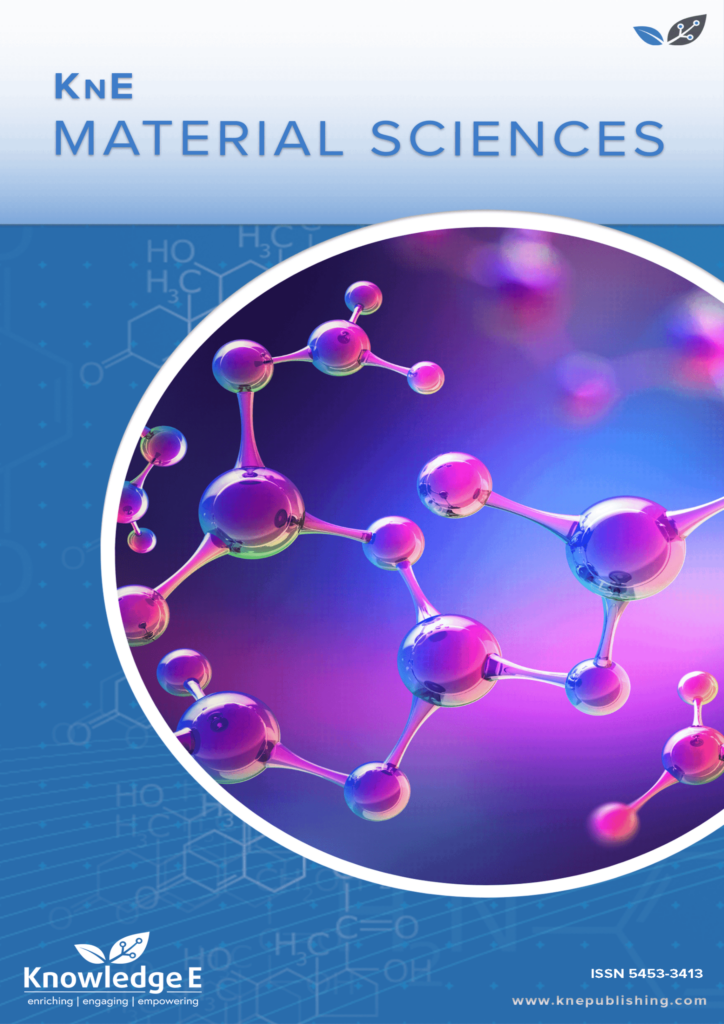
KnE Materials Science
ISSN: 2519-1438
The latest conference proceedings on physical materials, energy materials, electrical materials.
Water Reuse: A Risk Assessment Model for Water Resources
Published date: Aug 10 2022
Journal Title: KnE Materials Science
Issue title: 1st International FibEnTech Congress (FibEnTech21) – New Opportunities for Fibrous Materials in the Ecological Transition
Pages: 193–203
Authors:
Abstract:
The increasing demands for water for multiple purposes combined with climate change challenges are leading to water scarcity and quality deterioration. Portugal is vulnerable to the impacts of climate change and therefore, the use of reclaimed waters has been identified as a suitable alternative water source for non-potable uses, such as irrigation, to overcome water shortages. In the last two years, new policies for water reuse have been approved at the Portuguese and European levels. The legal frameworks are supported in the international guidelines developed by the International Organization for Standardization, namely for irrigation, urban uses and health risk assessment. In this way, all reuse projects must follow a fit-for-purpose approach, i.e., the water quality needs to meet the requirements of its specific end-uses without compromising public health or the surrounding environment, and all reuse projects must conduct a risk assessment for health and the environment. Quantitative, qualitative or semiquantitative models can be used. Although a quantitative assessment may be desirable, these models tend to be complex and present high uncertainty. Furthermore, these usually require extensive data which are often not available. Accordingly, this study intended to develop a conceptual model to deal with the risk assessment for water resources, namely surface and ground waters. A semi-quantitative approach was employed for the risk characterization, using empirical qualitative judgment to assess the relative importance of hazards, exposure routes, scenarios and barriers in place. The use of a strategic assessment allows the quality standards that meet the needs of each project to be validated. The developed model was applied to a case study to illustrate its applicability.
Keywords: water reuse, water resources, risk assessment, semi-quantitative model, compounds of emerging concern
References:
[1] Lazarova V, Asano T, Bahri A, Anderson J. Milestones in water reuse: The best success stories. New York: IWA Publishing; 2013.
[2] Chen Z, Wu G, Wu Y et al. Water eco-nexus cycle system (WaterEcoNet) as a key solution for water shortage and water environment problems in urban areas. Water Cycle. 2020;1:71-77. https://doi.org/10.1016/j.watcyc.2020.05.004
[3] Rebelo A, Quadrado M, Franco A, Lacasta N, Machado P. Water reuse in Portugal: New legislation trends to support the definition of water quality standards based on risk characterization. Water Cycle. 2020;1:41-53. https://doi.org/10.1016/j.watcyc.2020.05.006
[4] Wilcox J, Nasiri F, Bell S, Rahaman MS. Urban water reuse: A triple bottom line assessment framework and review. Sustainable Cities and Society. 2016;27:448-456. https://doi.org/10.1016/j.scs.2016.06.021
[5] H. Shakeri SN. Development of an algorithm for risk-based management of wastewater reuse alternatives. Journal of Water Reuse and Desalination. 2018;8(1):38–57.
[6] Amiard J, Amiard-Triquet C. Chapter 2 – Conventional Risk Assessment of Environmental Contaminants. In Aquatic ecotoxicology - Advancing tools for dealing with emerging risks. Amiard-Triquet C, Amiard J, Mouneyrac C, editors. London: Academic Press; 2015. https://doi.org/10.1016/B978-0-12-800949-9.00002-4
[7] Rebelo A, Ferra I, Gonçalves I, Marques AM. A risk assessment model for water resources: Releases of dangerous and hazardous substances. Journal of Environmental Management. 2014;140:51-59. https://doi.org/10.1016/j.jenvman.2014.02.025
[8] Shakir E, Zahraw Z, Al-Obaidy AHMJ. Environmental and health risks associated with reuse of wastewater for irrigation. Egyptian Journal of Petroleum. 2017;26(1):95–102.
[9] Shakir E, Zahraw Z, Al-Obaidy AHMJ. Environmental and health risks associated with reuse of wastewater for irrigation. Egyptian Journal of Petroleum. 2017;26(1):95-102. https://doi.org/10.1016/j.ejpe.2016.01.003
[10] Jirka GH, Bleninger T, Burrows R, Larsen T. Management of point source discharges into rivers: Where do environmental quality standards in the new EC-water framework directive apply? International Journal of River Basin Management. 2004;2(3):225- 233. https://doi.org/10.1080/15715124.2004.9635234
[11] Ishizaka A, Markus L. How to derive priorities in AHP: A comparative study. Central European Journal of Operations Research. 2006;14(4):387–400. https://doi.org/10.1007/s10100-006-0012-9
[12] Gormley S. Pollard R, Black E. Guidelines for environmental risk assessment and management - Green leaves III. London: Department for Environment, Food & Rural Affairs; 2011.
[13] Kafkafi U, Tarchitzky J. Fertigation: A tool for efficient fertilizer and water management. 1st ed. Paris: International Fertilizer Industry Association; 2011.
[14] Rebelo A, Ferra I, Marques A, Silva MM. Wastewater reuse: Modeling chloroform formation. Environmental Science and Pollution Research. 2016;23:24560-24566. https://doi.org/10.1007/s11356-016-7749-z
[15] Chen Z, Wu Q, Wu G, Hu H-Y. Centralized water reuse system with multiple applications in urban areas: Lessons from China’s experience. Resources, Conservation and Recycling. 2017;117:125–136. https://doi.org/10.1016/j.resconrec.2016.11.008